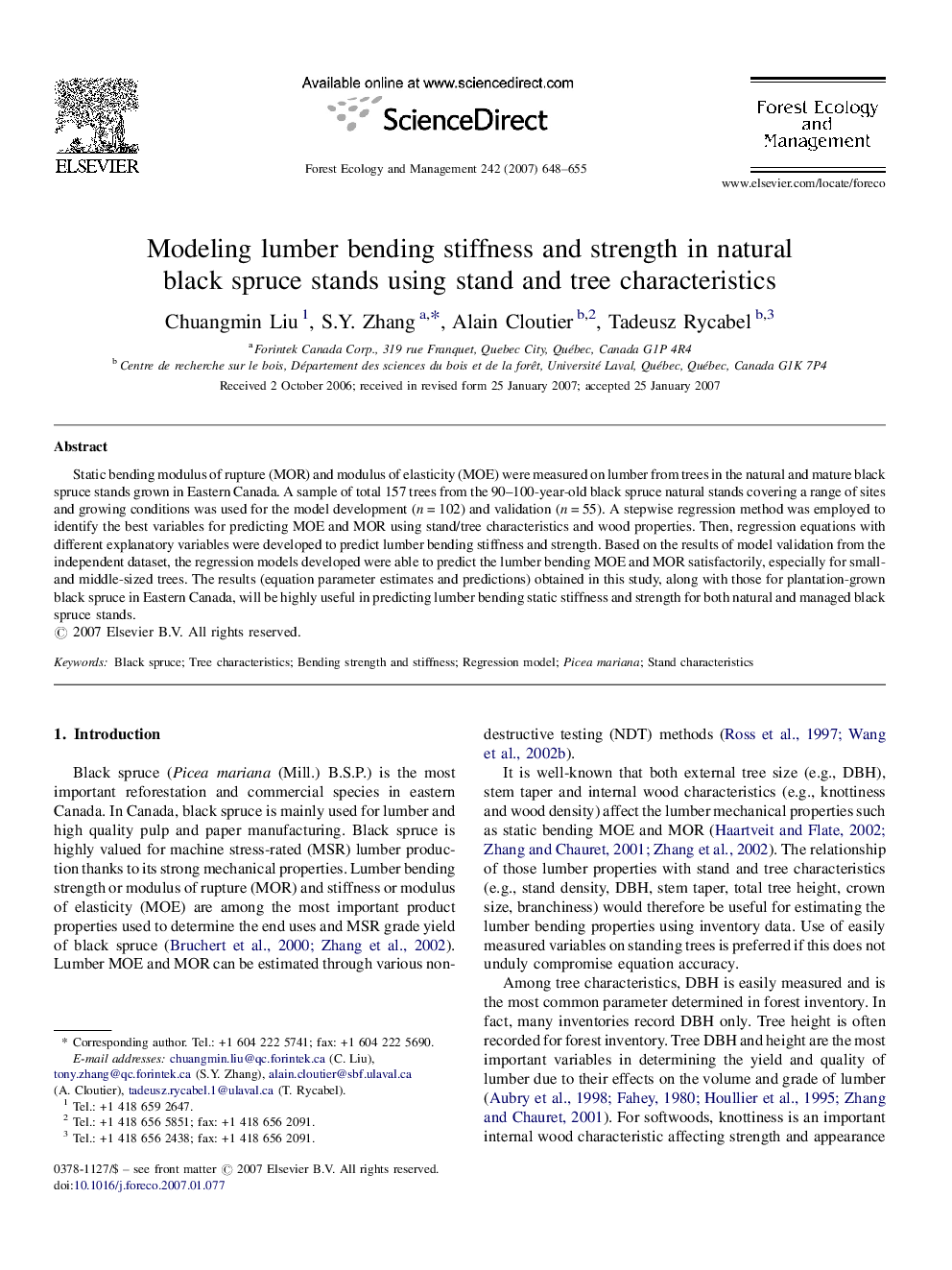| Article ID | Journal | Published Year | Pages | File Type |
|---|---|---|---|---|
| 90676 | Forest Ecology and Management | 2007 | 8 Pages |
Static bending modulus of rupture (MOR) and modulus of elasticity (MOE) were measured on lumber from trees in the natural and mature black spruce stands grown in Eastern Canada. A sample of total 157 trees from the 90–100-year-old black spruce natural stands covering a range of sites and growing conditions was used for the model development (n = 102) and validation (n = 55). A stepwise regression method was employed to identify the best variables for predicting MOE and MOR using stand/tree characteristics and wood properties. Then, regression equations with different explanatory variables were developed to predict lumber bending stiffness and strength. Based on the results of model validation from the independent dataset, the regression models developed were able to predict the lumber bending MOE and MOR satisfactorily, especially for small- and middle-sized trees. The results (equation parameter estimates and predictions) obtained in this study, along with those for plantation-grown black spruce in Eastern Canada, will be highly useful in predicting lumber bending static stiffness and strength for both natural and managed black spruce stands.
